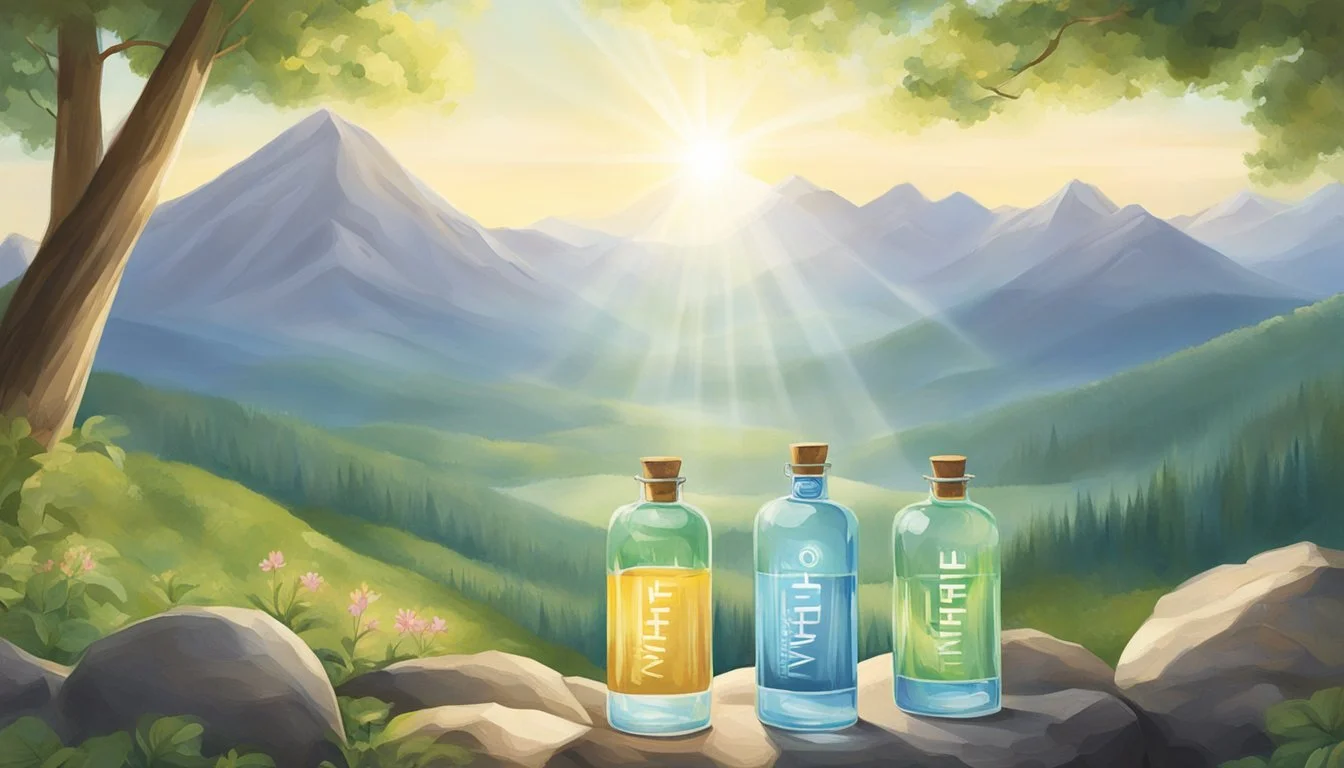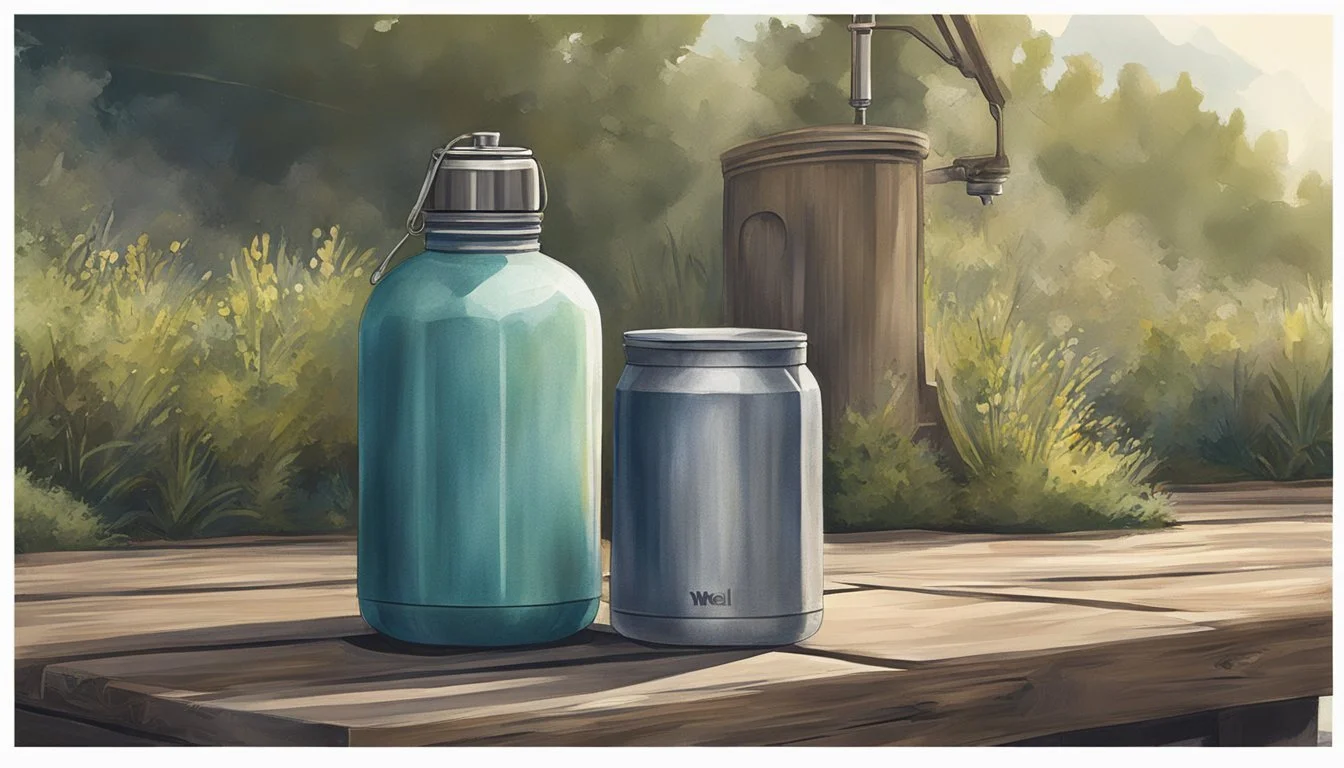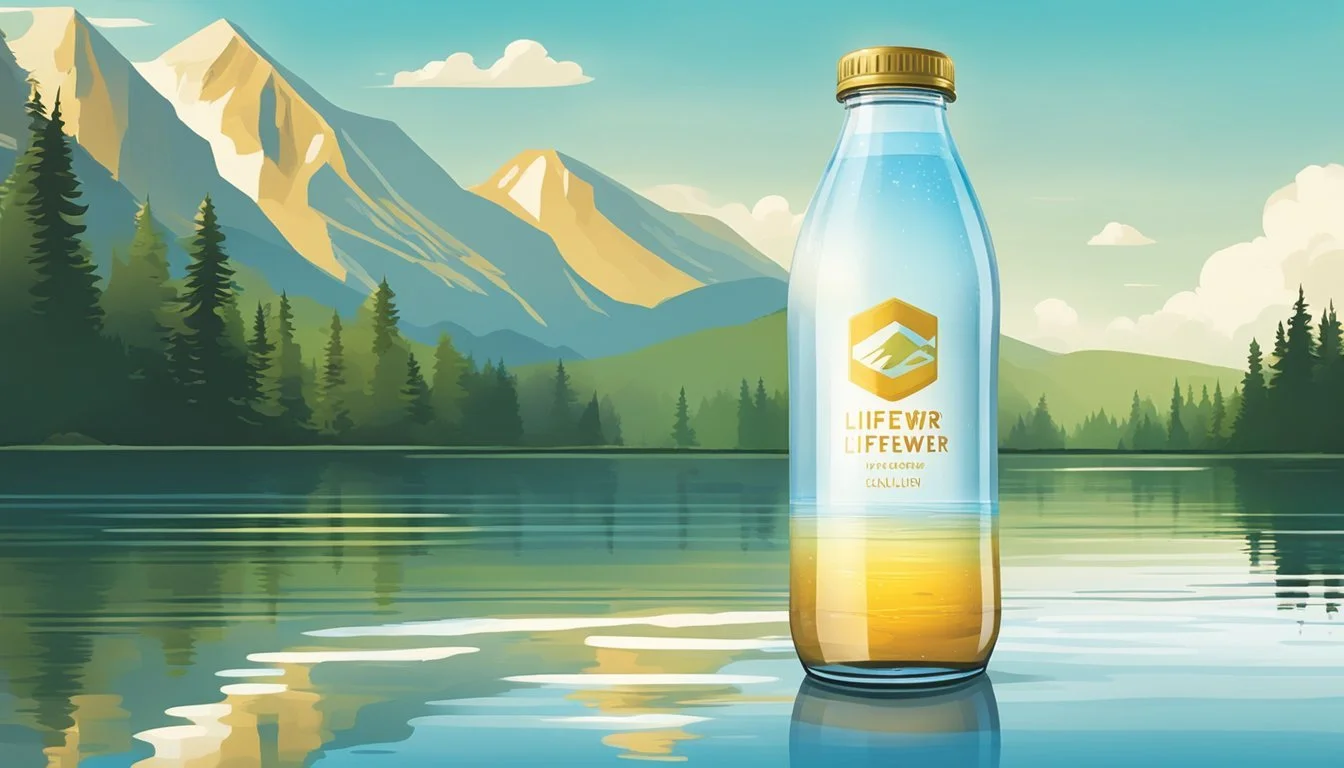LIFEWTR vs. The Well
Comprehensive Bottled Water Comparison
Choosing the right bottled water can be overwhelming, given the numerous brands available on the market. LIFEWTR and The Well are two prominent choices, each with its unique characteristics and brand promises. This article will provide a comprehensive comparison to help you decide which one stands out in terms of taste, purity, and value.
LIFEWTR, known for its artistic packaging and premium positioning, offers water with a balanced pH level, ranging from slightly acidic to neutral. This brand prides itself on offering water that is both aesthetically pleasing and hydrating. On the other hand, The Well emphasizes its commitment to sustainable practices and clean, refreshing taste, making it a worthy contender.
For those seeking a balanced, purified water with a touch of artistic flair, LIFEWTR may be the better choice, whereas consumers prioritizing sustainability and simplicity might find The Well more appealing. This comparison will explore these aspects in detail, ensuring you have all the information needed to make an informed decision.
The Importance of Hydration
Proper hydration is crucial for maintaining overall health and well-being. It supports various bodily functions, improves cognitive performance, and helps maintain energy levels. Adequate intake of water, along with necessary electrolytes, ensures peak physical performance and optimal health.
Understanding Hydration and Health Benefits
Hydration is essential for numerous bodily functions, including regulating body temperature and maintaining skin health. Drinking water helps flush out toxins, supports digestion, and ensures proper joint lubrication.
A well-hydrated body has improved brain function, including better concentration, mood stability, and reduced fatigue. Additionally, staying hydrated can help prevent headaches and improve general alertness.
Roles of Electrolytes in Hydration
Electrolytes such as sodium, potassium, magnesium, and calcium play a critical role in maintaining fluid balance within the body. They assist in muscle function and nerve signaling.
Without adequate electrolytes, the body can experience imbalances leading to dehydration, cramps, and even more serious conditions like electrolyte disturbances. Proper hydration strategies often include beverages that provide balanced electrolytes, especially for athletes or individuals engaging in intense physical activities.
Optimal Water Sources for Hydration
Choosing the right water source impacts hydration quality. Spring water, mineral water, and purified water are common sources. Each type has unique features:
Spring water provides natural minerals and comes from protected underground sources.
Mineral water contains essential minerals, offering health benefits.
Purified water goes through processes to remove impurities, ensuring safe consumption.
When selecting bottled water for optimal hydration, consider the source and its mineral content. Bottled waters like LIFEWTR or other premium brands often emphasize purity and added electrolytes to enhance hydration benefits.
Overview of Bottled Water Industry
The bottled water industry has grown significantly, driven by a demand for convenience, purity, and health benefits. Major players include both global brands and niche offerings, each vying for consumer preference with distinctive qualities.
Market Comparison and Leading Brands
The bottled water market features prominent companies like Coca-Cola, PepsiCo, and Nestlé. These corporations manage major labels such as Dasani, Aquafina, and Poland Spring.
Coca-Cola’s Dasani focuses on purified water with added minerals. PepsiCo’s Aquafina is also a purified water, serving a similar market segment. Poland Spring, owned by Nestlé, is sourced from natural springs, emphasizing its mineral content.
Premium brands like Fiji and Evian highlight their natural sources and unique mineral profiles. Fiji is sourced from an artesian aquifer in Viti Levu, Fiji, while Evian is from the French Alps.
LIFEWTR, another PepsiCo product, stands out with its emphasis on pH balance and artistic packaging. Voss markets itself as a luxury brand with water sourced from aquifers in Norway, positioned in sleek, glass bottles.
Evolving Consumer Preferences and Water Brands
Consumers increasingly favor bottled water over sugary drinks, driven by health consciousness and convenience. There’s a growing interest in the pH balance, mineral content, and source of the water.
Brands like LIFEWTR and Voss have tapped into this trend by offering products with specific health benefits and sleek, attractive packaging. The demand for premium and functional water encourages innovation, with companies emphasizing unique characteristics to stand out.
Environmental concerns also play a role, prompting brands to explore sustainable packaging options. With the focus on reducing plastic waste, many companies are moving towards recycled and biodegradable materials. This shift reflects an evolving market responding to both health trends and environmental awareness.
LIFEWTR: Brand Overview and Features
LIFEWTR is a premium bottled water known for its high purity and aesthetic design. The brand emphasizes purity through its rigorous filtration process and stands out in the market with its artistic, eye-catching bottle designs.
Unique Selling Points: Design and Purity
LIFEWTR distinguishes itself primarily through its artistic and ever-evolving bottle designs. Each series features labels designed by emerging artists, making the bottles not just a source of hydration but also a piece of art. This approach appeals to consumers looking for a combination of functionality and visual appeal.
In terms of purity, LIFEWTR undergoes a 7-step enhanced filtration process that ensures the water is free from impurities. This process includes reverse osmosis, which removes contaminants and provides a clean, crisp taste. The water is then infused with electrolytes for optimal taste, making it both refreshing and pure.
Comparative Analysis: LIFEWTR vs. Smartwater
LIFEWTR and Smartwater are both top-tier brands but differ in their unique selling points. Smartwater focuses on simplicity and purity, offering vapor-distilled water with added electrolytes. Its branding is sleek but minimalist compared to LIFEWTR's artistic expression.
Regarding pH levels, LIFEWTR generally has a pH range between 6.4 to 7.4, while Smartwater is typically more neutral or slightly alkaline. Both brands ensure their water is free from impurities, but LIFEWTR's electrolyte blend is specifically balanced for taste, whereas Smartwater emphasizes a crisp, clean experience.
These differentiations help each brand cater to distinct consumer preferences, with LIFEWTR focusing on art and enhanced taste, and Smartwater prioritizing simplicity and purity.
The Well: Brand Insights and Advantages
The Well offers natural spring water sourced from pristine locations, emphasizing purity and sustainability. Their health and environmental initiatives reflect a commitment to consumer well-being and ecological responsibility.
Source and Natural Quality of The Well Water
The Well sources its water from deep natural springs. These springs are located in remote, protected areas, ensuring minimal contamination and maintaining the water's natural purity.
The water undergoes limited processing to retain its natural minerals, providing a crisp and refreshing taste. Mineral content includes calcium, magnesium, and low sodium.
Natural filtration through rocks and soil layers enhances the water's clean profile.
Health and Environmental Initiatives
The Well prioritizes consumer health by ensuring their water is free from artificial additives and contaminants. Regular testing ensures high-quality standards.
Environmental sustainability is key to The Well's operations. The company uses 100% recyclable bottles and promotes recycling programs to reduce plastic waste.
Conservation efforts include protecting the water sources and practicing sustainable extraction methods.
Initiatives like reduced carbon footprint and eco-friendly packaging reflect their commitment to the environment.
Quality Comparison of Bottled Water
Quality assessment of bottled water frequently involves multiple factors, including taste, pH balance, and purity. These aspects are meticulously reviewed to ensure consumers receive the best product possible.
Taste Profiles and Consumer Preferences
Taste is a subjective but critical aspect of bottled water. LIFEWTR has a relatively clean and crisp taste devoid of any unpleasant aftertaste. The Well, on the other hand, offers a refreshing flavor that some describe as slightly sweet due to its mineral content.
Consumer preferences often vary. Some individuals may prefer the sharper taste profile of LIFEWTR, while others may enjoy the smoother and subtly flavored experience provided by The Well.
PH Balance and Mineral Content Analysis
PH balance greatly influences the characteristics of bottled water. LIFEWTR maintains a pH level typically between 6.4 and 7.4, making it slightly acidic to neutral. The Well aims for a pH balance that hovers around neutral, often falling between 7 and 7.5, which is optimal for balanced hydration.
Regarding mineral content, LIFEWTR contains electrolytes like calcium, magnesium, and potassium. The Well also includes a blend of essential minerals but focuses on maintaining naturally occurring elements without artificial additives.
Assessing Purity: Filtration and Contaminants
Purity is paramount to bottled water quality. LIFEWTR employs an advanced reverse osmosis filtration process to remove contaminants, ensuring high purity. The Well uses a combination of multiple filtration methods, including reverse osmosis and activated carbon, to eliminate heavy metals such as lead.
Both brands are compliant with the Environmental Protection Agency's standards for bottled water, ensuring their products are safe and clean for consumption. Regular testing for contaminants further ensures that consumers are provided with the purest possible water.
Environmental and Health Implications
The discussion of LIFEWTR vs. The Well entails examining not only the taste and packaging but also the environmental and health impacts of consuming bottled water. Understanding these implications helps consumers make more informed choices.
Impact of Plastic Bottles on the Environment
Plastic bottles contribute significantly to environmental degradation. Production of plastic bottles requires vast amounts of fossil fuels, releasing greenhouse gases. For example, one study indicated that if all Barcelona residents switched entirely to bottled water, it would cost $83.9 million and lead to the loss of 1.43 species per year.
Furthermore, plastic bottles often end up in landfills or oceans, taking hundreds of years to decompose. This contributes to pollution and poses a threat to marine life. Efforts towards sustainability are crucial, yet recycling rates remain low. Only a small fraction of plastic bottles are repurposed, highlighting the urgent need for more robust recycling programs and alternatives to plastic packaging.
Health Concerns Related to Bottled Water Consumption
There are health concerns associated with bottled water. Some plastic bottles contain BPA (Bisphenol A), a chemical linked to health issues such as hormone disruption. Even BPA-free plastics can leach other harmful chemicals under certain conditions.
Contaminants like arsenic and mercury are other potential threats. Although bottled water is regulated, it is not immune from contamination. Cases of bottled water being recalled due to the presence of toxins highlight the need for vigilance.
Additionally, some studies suggest that bottled water might not be significantly safer than tap water, and the perceived health benefits need to be weighed against the potential exposure to harmful chemicals.
Water Safety and Regulation
Both LIFEWTR and The Well adhere to stringent safety and regulatory standards to ensure their bottled water is safe for consumption.
FDA and International Standards for Water Safety
In the United States, the Food and Drug Administration (FDA) regulates bottled water to ensure it meets safety and quality standards. These regulations are similar to those set by the Environmental Protection Agency (EPA) for tap water. The FDA mandates that bottled water must be free from harmful contaminants.
LIFEWTR and The Well must comply with these regulations. This includes regular testing for bacteria, chemical, and physical contaminants. Each brand must also maintain detailed records of their testing routines and results.
Internationally, bottled water is subject to regulations from organizations such as the European Union and the World Health Organization (WHO). These bodies set guidelines for water purity and safety, ensuring that any bottled water sold in their jurisdictions is safe to drink.
Convenience Factor and Consumer Lifestyle
When evaluating LIFEWTR and The Well, convenience in daily life and consumer preferences play a crucial role. We will explore how these bottled waters fit into everyday schedules and how they compare with tap and filtered water.
The Role of Bottled Water in Daily Convenience
Bottled water, like LIFEWTR and The Well, offers significant advantages for those with busy, on-the-go lifestyles.
Portability is a primary benefit, allowing users to carry a clean, sealed bottle anywhere without worrying about contaminants.
Pre-packaged sizes also add to the convenience, with options ranging from small personal bottles to larger family-sized containers.
For athletes and outdoor enthusiasts, having a reliable source of hydration that doesn’t require re-filling is critical.
Widely available in stores, vending machines, and online retailers, bottled water ensures consistent access.
Comparing Bottled Water with Tap and Filtered Water
When comparing bottled water to tap and filtered water, several factors come into play.
Tap water is readily available and cost-effective but may vary in taste and quality depending on the location.
Filtered water offers a middle ground, providing better taste and fewer contaminants than tap, but often lacks the portability of bottled options.
Convenience is a key differentiator for bottled water. With tap water, users must ensure their source is clean and safe, while filtered water requires access to filtering systems.
In contrast, bottled water is immediately accessible and guarantees consistent quality, making it a preferred choice for those prioritizing ease and reliability.
More About LIFEWTR
Icelandic Glacial vs LIFEWTR: Which Bottled Water is Better?
LIFEWTR vs Kirkland Signature: Which Bottled Water is Better?
LIFEWTR vs Mountain Valley Spring Water: Which Bottled Water is Better?
LIFEWTR vs Richard's Rainwater: Which Bottled Water is Better?
LIFEWTR vs Whole Foods Italian Still Mineral water: Which Bottled Water is Better?
More About The Well
Cascade Mountain vs The Well: Which Bottled Water is Better?
Hawaiian Springs vs The Well: Which Bottled Water is Better?
Icelandic Glacial vs The Well: Which Bottled Water is Better?
Mountain Valley Spring Water vs The Well: Which Bottled Water is Better?
Nestle Pure Life vs The Well: Which Bottled Water is Better?
Richard's Rainwater vs The Well: Which Bottled Water is Better?
The Well vs Kirkland Signature: Which Bottled Water is Better?
The Well vs Talking Rain AQA: Which Bottled Water is Better?
Whole Foods Italian Still Mineral water vs The Well: Which Bottled Water is Better?






